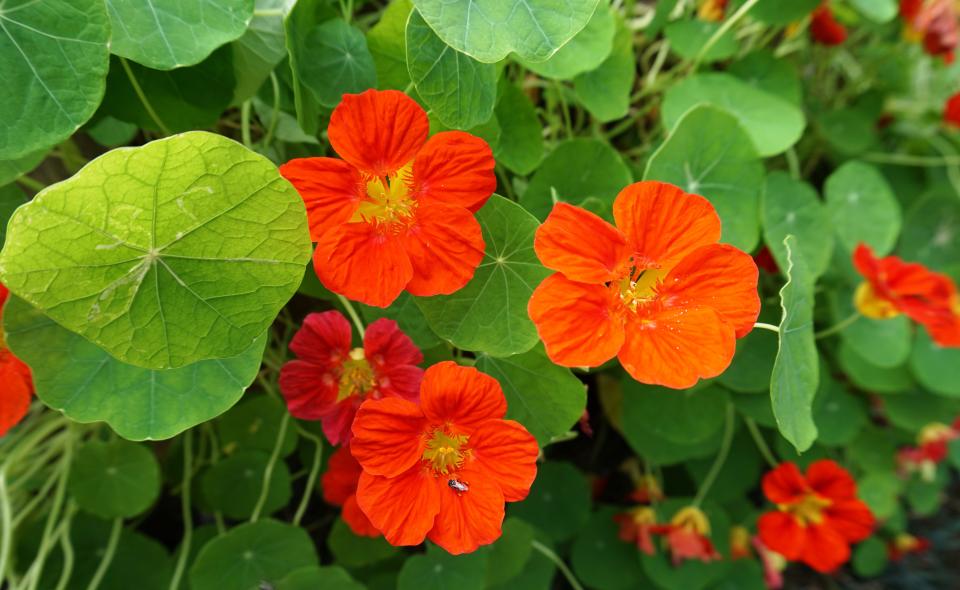Try traditional annuals for color and fragrance
Nasturtium and sweet pea are annual flowers that have been cultivated in the United States for centuries. Sweet pea (Lathyrus odoratus) is a member of the pea family admired for its delightfully fragrant blossoms in winter and spring. Native to Southern Europe, sweet peas can be bushy or vining plants and come in a range of solid and mixed flower colors. Both kinds benefit from pinching to encourage side growth. In addition, seed pods should be removed promptly. When growing from seeds, soak them overnight before sowing an inch deep in sun. Sweet pea plants require frequent irrigation.
Nasturtium plants (Tropaeolem majus) are also offered as bush or vining types with aromataic single or double flowers in a range of colors. Fast-growing on sandy sites in sun or light shade, nasturtiums — native to Tropical America — feature abundant blossoms and distinctively rounded foliage with a peppery flavor. Indeed, the flowers and foliage are frequent additions to salads. Even the large seeds are edible. Note: Mounding, bushy types are often described as dwarfs. Nasturtiums, which germinate quickly and rapidly reach flowering size, are great for introducing children to gardening.

PUSHING THE WARM SEASON
For most Central Florida vegetable lovers, the spring planting season begins early — in mid-February. But adventurous gardeners are even more daring, tempting fate by starting watermelon, pepper, tomato and eggplant this month. Many grow their plants in 5-gallon containers that can be moved to sheltered locations when frosts are predicted. Also useful are commercially produced frost blankets: These lightweight, woven fabrics protect plants while admitting light and water. In addition to these marginal vegetables, the tried-and-tested, cool-season greens and root crops can still be planted, as can many herbs.
LOBLOLLY BAY A THING OF BEAUTY
Among the best of Florida’s native plants is the loblolly bay tree, a slow-growing evergreen gem that eventually reaches 65 to 80 feet tall. This narrow-crowned species (Gordonia lasianthus) grows to perfection on moist, acidic sites in light shade, flaunting aromatic white flowers in spring and early summer. It’s also colorful during cool winters, when older leaves turn bright red. Locations bordering lakes and ponds are ideal, though regularly irrigated sites are acceptable if they’re organically improved and kept deeply mulched. Cold-hardy and largely pest-proof if appropriately sited, loblolly bay demands little or no pruning due to its slow, upright growth habit. Propagation is by seed, though stratification — chilling in a refrigerator for several weeks — is required before sowing. Seeds are available online.
XERISCAPING DEFINED
Xeriscaping is a landscaping method that significantly reduces the need for irrigation by using drought-tolerant plants, reducing turf and mulching appropriately. ‘’Thirsty’’ species can be included but should be clustered in a single zone.
This article originally appeared on The Ledger: Nasturtium and sweet pea

